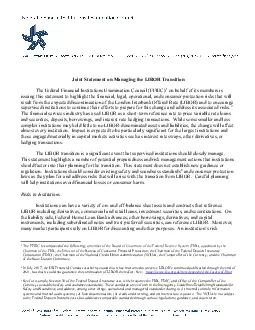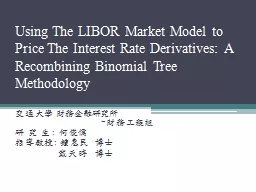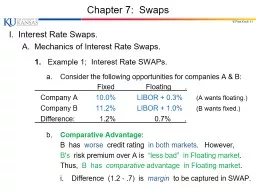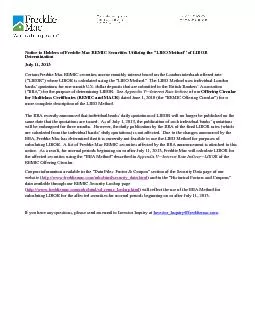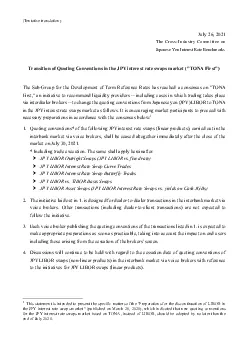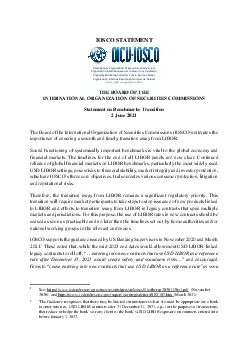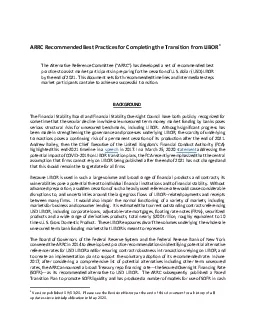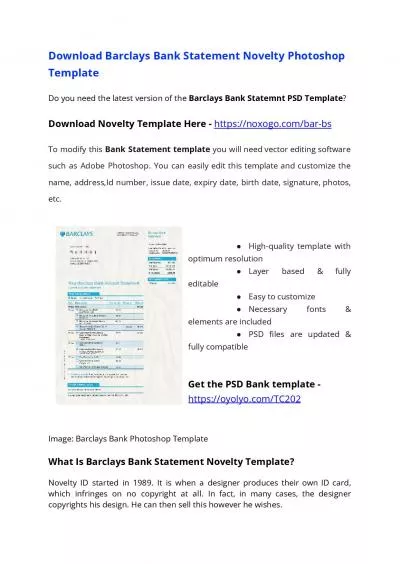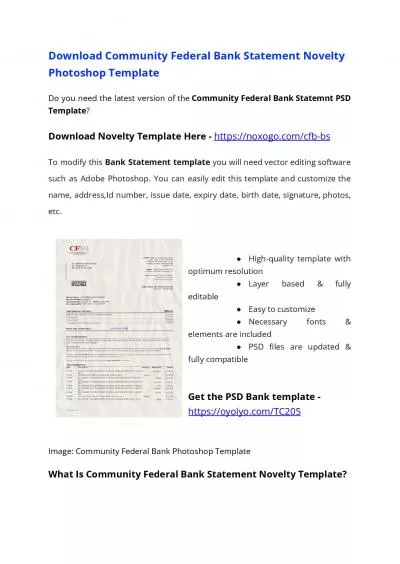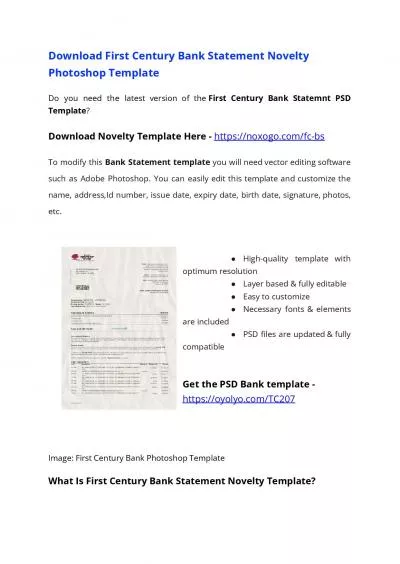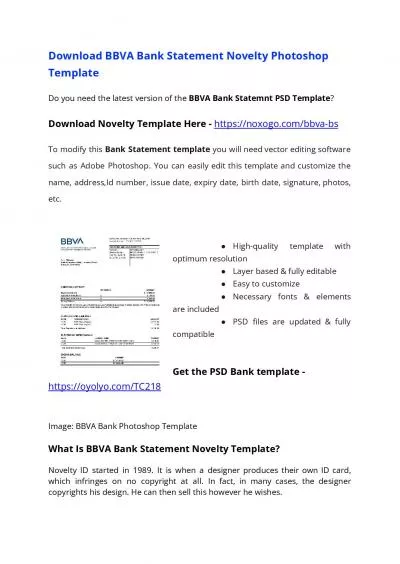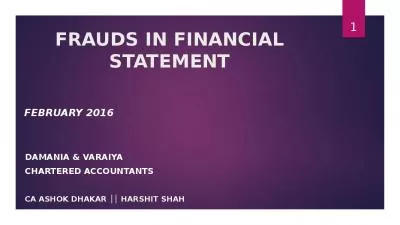PDF-Joint Statement on Managing the LIBOR TransitionThe Federal Financial
Author : bitsy | Published Date : 2021-09-22
The FFIEC is compsed ofthe following a member of the Board of Governors ofthe Federal Reserve SystemFRBappointed by the Chairman of the FRBSee for example Section
Presentation Embed Code
Download Presentation
Download Presentation The PPT/PDF document "Joint Statement on Managing the LIBOR Tr..." is the property of its rightful owner. Permission is granted to download and print the materials on this website for personal, non-commercial use only, and to display it on your personal computer provided you do not modify the materials and that you retain all copyright notices contained in the materials. By downloading content from our website, you accept the terms of this agreement.
Joint Statement on Managing the LIBOR TransitionThe Federal Financial: Transcript
Download Rules Of Document
"Joint Statement on Managing the LIBOR TransitionThe Federal Financial"The content belongs to its owner. You may download and print it for personal use, without modification, and keep all copyright notices. By downloading, you agree to these terms.
Related Documents

